Selective use of egg yolk binder
Artists' Materials
Egg yolk is present in areas painted with red lead, and probably also with vermilion, in the two initials painted by Don Silvestro dei Gherarducci (see Artists).
The image of St Laurence also contains small amounts of egg yolk in orange and red areas, but the same binder was also employed in the initial and border ornament, irrespective of the pigments used. In all three cases, the spectral signature which identifies the binder is not as intense as would be expected if egg yolk had been used alone. It is possible that whole egg was used, or else that a small amount of egg yolk was added to another type of binder, perhaps to improve the handling properties of the paint.
The spectral signature is stronger in the fourth initial, where only the figure of Christ was painted with egg yolk. Egg yolk was not used in the initial and its ornamentation. This paradigm is consistent with the results of technical analyses carried out on other contemporary books from the Santa Maria degli Angeli set and on the Acciaiuoli Missal (MS 30). These are all linked to the work of the later generation of Florentine artists led by the celebrated panel painter and illuminator Lorenzo Monaco.
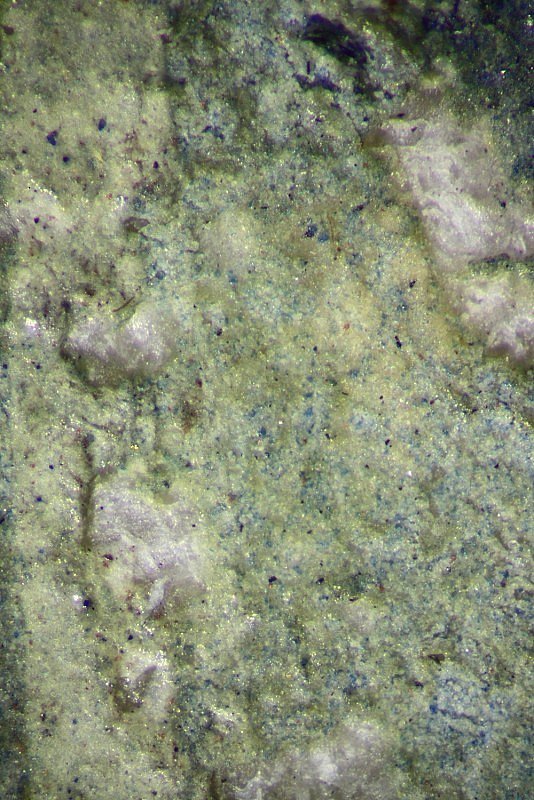
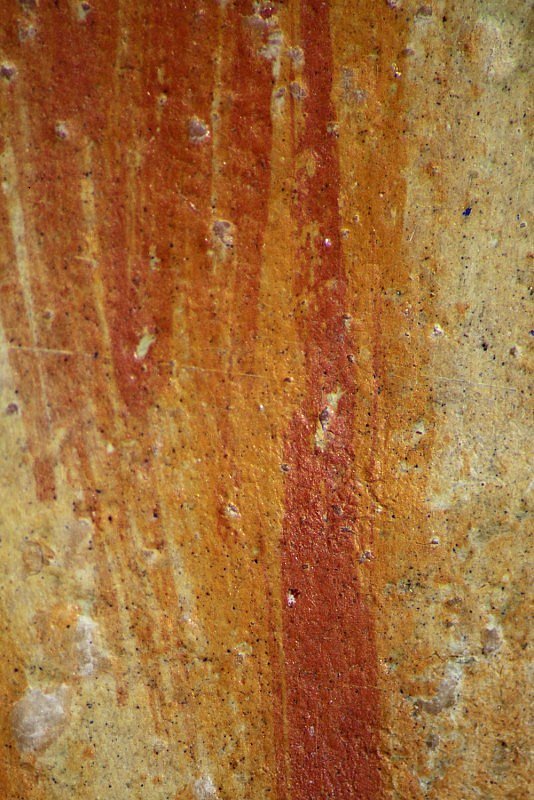
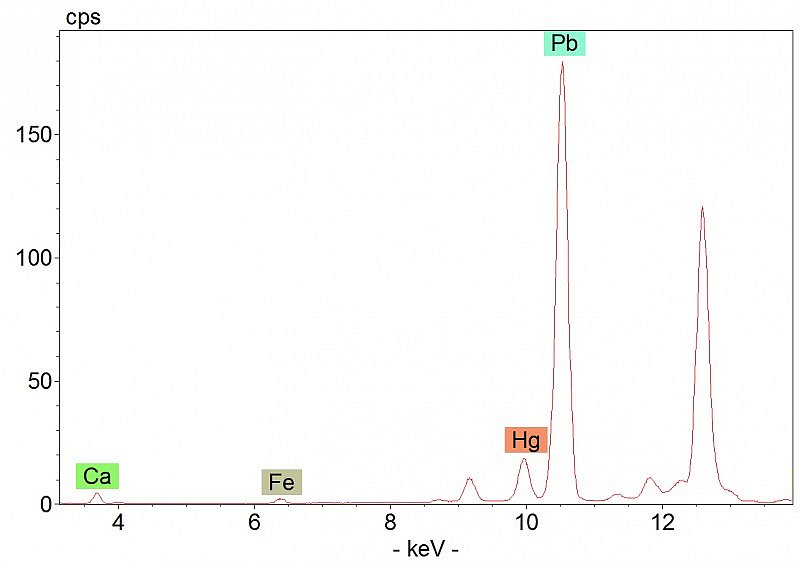
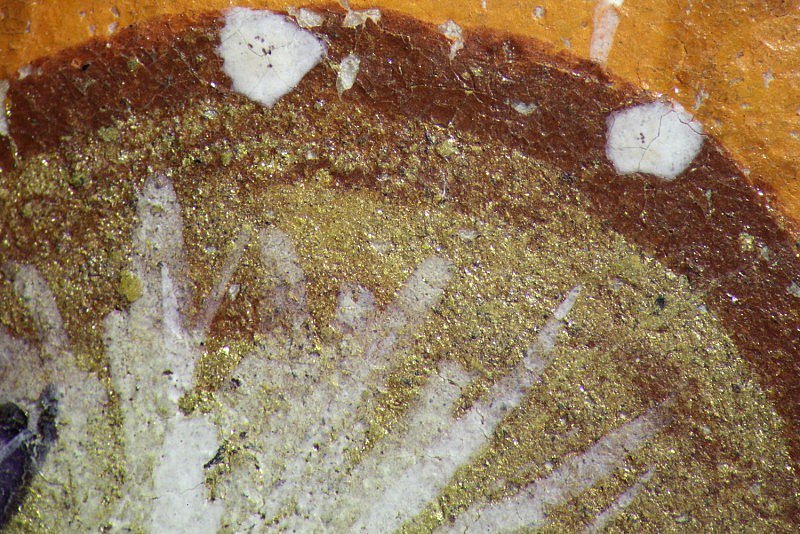
Detail of
the mosaic gold leaf, outlined with a dark red earth pigment, under
magnification (16x). Its shiny aspect and the characteristic peak at 308 cm-1
in the Raman spectrum (below) confirm the presence of mosaic gold.
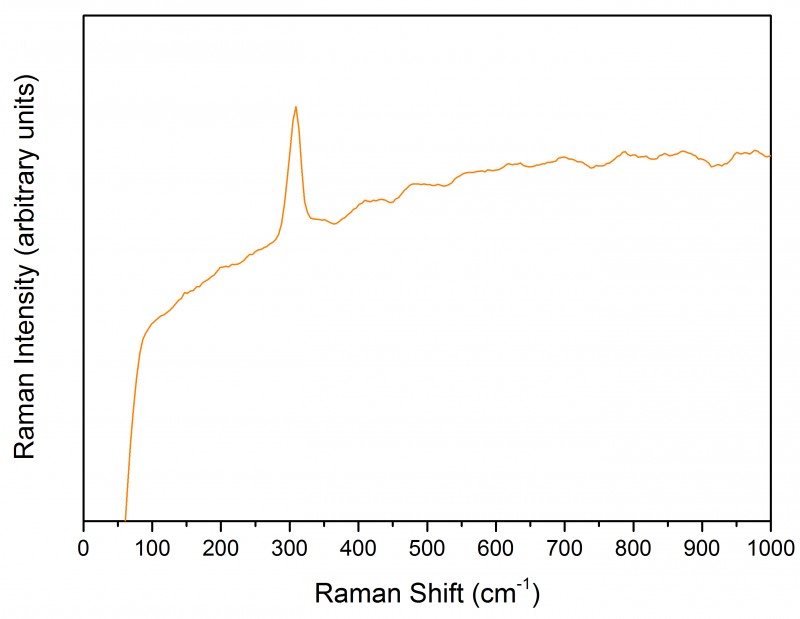
St Laurence
Historiated initial L from an Antiphoner, 1390s
The initial L belonged to the office of Matins for the feast of St Laurence (10 August) in Corale 19, an Antiphoner made in the 1390s. St Laurence is shown with a book, a martyr’s palm branch and his distinctive attribute, the gridiron on which he was tortured. The image has been attributed to various artists: Don Silvestro dei Gherarducci; his collaborator known as the Maestro delle Canzoni; or the Florentine painter and illuminator Mariotto di Nardo.
It is also possible that the figure of St Laurence and the decorated initial were painted by two different artists; despite general similarities, some differences exist between the pigments used in these two areas. Green hues, for example, were all obtained using a mixture of azurite with a yellow pigment. The palm leaf held by the Saint, however, seems to contain ultramarine as well (hotspot 1). The XRF data also suggest the presence of gypsum in most of the border areas analysed, but not in the figure of the Saint.
Related content: Initials from Choir Books
- Artists: The Artists associated with the initial of St Laurence
- Texts and Images: St Laurence
- Description and Contents: Physical Description
- Description and Contents: Script and Textual Contents
- Artists' Materials: Differences in palette
- Artists' Materials: Selective use of egg yolk binder
- Artists' Techniques: Gold tooling
- Artists' Techniques: Painting the flesh
